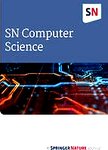版权所有:内蒙古大学图书馆 技术提供:维普资讯• 智图
内蒙古自治区呼和浩特市赛罕区大学西街235号 邮编: 010021

作者机构:Department of Computer Science and Engineering M S Ramaiah Institute of Technology Bengaluru 560054 India Department of Artificial Intelligence and Data Science Ramaiah Institute of Technology Bengaluru 560054 India School of Computer Science and Engineering REVA University Bengaluru 560064 India Department of Electronics and Communication Engineering Nitte Meenakshi Institute of Technology Bengaluru India Department of Electrical and Electronics Engineering Sir M Visvesvaraya Institute of Technology Bengaluru India School of Computer Science & Engineering Presidency University Bengaluru 560064 India Department of Electronics & Communication Engineering Nagarjuna College of Engineering & Technology Bengaluru 562164 India
出 版 物:《SN Computer Science》 (SN COMPUT. SCI.)
年 卷 期:2024年第5卷第8期
页 面:1-20页
基 金:Ramaiah Institute Of Technology, RIT REVA University, (Bengaluru-560064)
主 题:Bio-inspired optimization Deep neural network (DNN) Skin cancer prediction
摘 要:This study offers a unified surgical conception of skin neoplasms using deep learning and genetic optimization techniques to improve classification values and speed of diagnosis. In this case, the architecture of Convolutional Neural Networks such as MobileNet, Xception and Inception is enhanced on the basis of the creative algorithms of Particle Swarm Optimization and Bat Algorithm to adjust the hyperparameters. The Heroku hosted cloud solution permits registered users to upload pictures of skin lesions via the web interface, where the picture is then processed through a Deep Neural Network (DNN) model that classifies the lesion as either melanoma or non-melanoma. The Convolution Neural Network (CNN) models were trained and evaluated on large publicly available datasets of skin lesions like ISIC, HAM10000 and the model performance was evaluated based on the effect of varying optimizers. Among all the architectures, Xception with Bat Algorithm (BA) performed best because of the more complex and deeper network architecture and extreme inception modules, which made it possible to extract and classify more complicated features. As a cloud-based solution, this system provides dermatologists and health practitioners with a more practical and workable solution for the detection of skin cancers. Furthermore, it can be utilized in other fields, which implies that this approach could extend its applications beyond dermatological imaging or imaging of patients at risk for other diseases, thus creating an adaptable and effective tool for clinical diagnosis in many areas of medicine. © The Author(s), under exclusive licence to Springer Nature Singapore Pte Ltd. 2024.